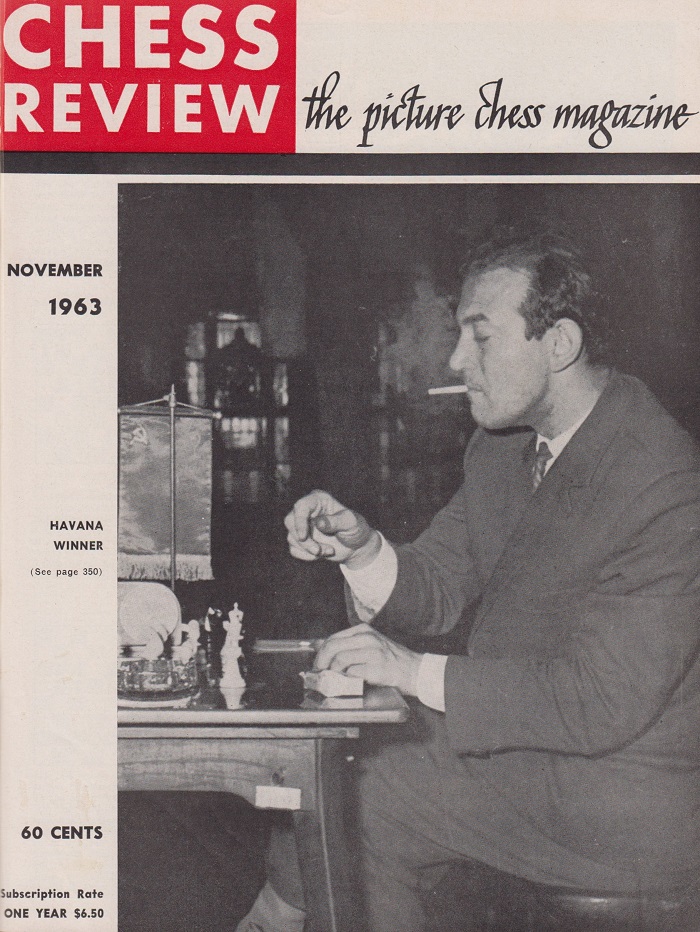
Edward Winter

The complete photograph (also showing his opponent, Miroslav Filip) had been published on page 140 of Chess Review, May 1962.
The three photographs below come from our archives and were shown in C.N.s 9507, 9626 and 9787:
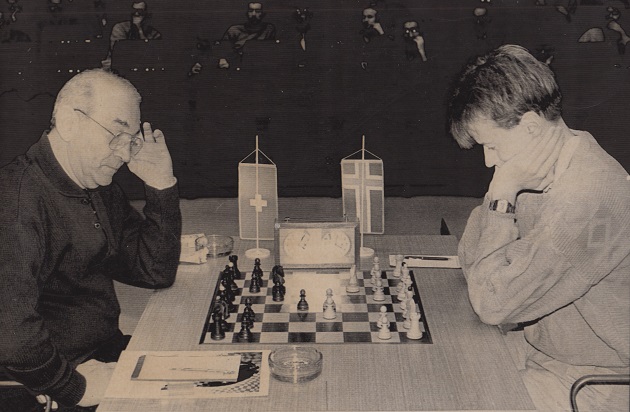
Victor Korchnoi, Jóhann Hjartarson, Belgrade, 1987
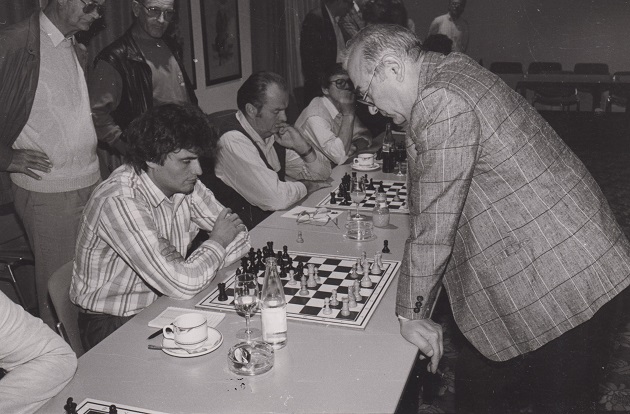
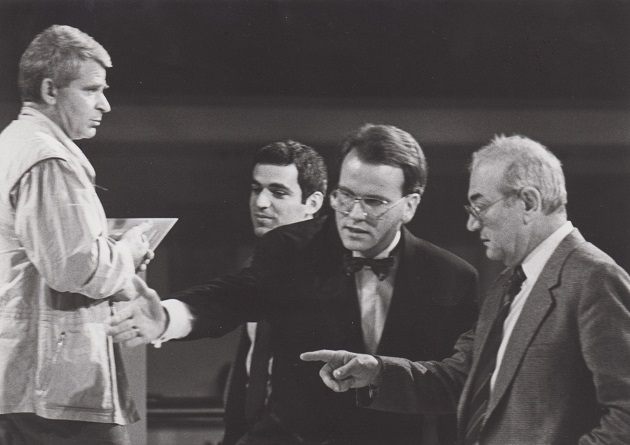
Boris Spassky, Garry Kasparov, Páll Magnússon, Victor Korchnoi (Reykjavik, 1988).
Four further shots from our collection:
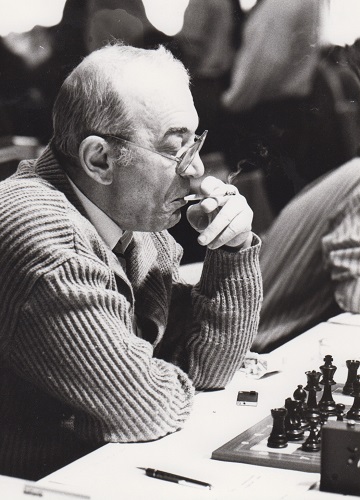
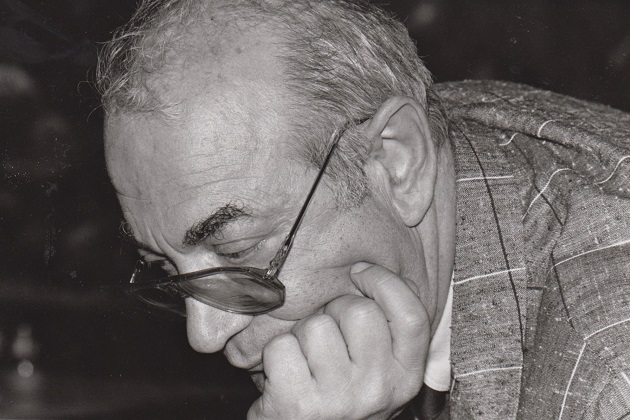
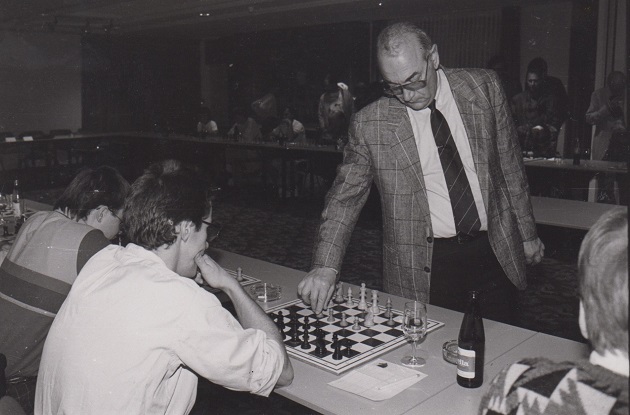
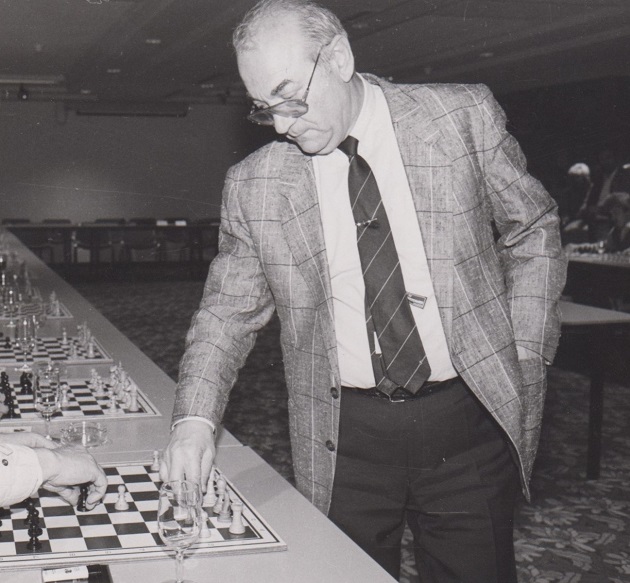
***
Below is a miscellany of Chess Notes items concerning Korchnoi.
The recent rumpus over Kasparov’s participation in the Candidates’ competition has proved once again that few of us have a clear idea how FIDE works, still less a good understanding of the background to major chess fixtures. About the only book to make a serious attempt at removing the lid and revealing – fairly – the brew is Chess Scandals: The 1978 World Chess Championship by E.B. Edmondson and M. Tal (Pergamon, 1981).
Some jottings:
Quote by Karpov after a colourless draw in 18 moves in the first match-game: ‘We were only testing the equipment.’
‘Game five established two records in world championship play. It was the longest ever (game 14 of Tal-Botvinnik 1961 lasted for 121 moves) and the first one to end in a stalemate.’
Quote by Petra Leeuwerik (who Edmondson believes was unwittingly a hindrance to Korchnoi’s cause): ‘Viktor must really be going mad; now he doesn’t even realize that he is being disturbed.’
Quote by Karpov to the arbiters: ‘I’ll stop swiveling if he takes off his glasses.’
Korchnoi when he closed the score from 5-2 to 5-3: ‘Well, I have now won one game in a row.’
The late Colonel provides a mass of documentation, tracing all the unbecoming disputes that marked the 1978 match as one of the most bitter in the game’s history. It seems strange that the 1972 Spassky-Fischer match did not give rise to such a book (we are discounting the scurrilous fiction of Brad Darrach).
Inevitably our knowledge of behind-the-scenes ‘scandals’ varies enormously from one world championship match to another; try researching the Capablanca-Alekhine encounter of 1927 and you will be lucky if you can even find a single photograph of the players.
(509)
Nowadays Karpov gives almost as many interviews as he plays games, and has learned to perfection the requisite skills. The Edmondson book mentioned in C.N. 509 [Chess Scandals] gives a three-page transcript of a press conference in Baguio City. To the assembled newshounds Karpov showed himself to be charming, unassuming, discreet, reasonable and diplomatic in best Sebastian Coe fashion. None of the above adjectives is particularly appropriate for Korchnoi, who acts more like a human being, relishing his new-found freedom of speech.
(540)
The March 1987 Europe Echecs (pages 159-164) has a terrific interview with Boris Spassky, by Jacques Le Monnier. The former world champion talks candidly about all of his main opponents, singling out Keres as a particularly kind and gentlemanly colleague. The last chess artist was perhaps Larsen, the game having now moved towards a phase of chess ‘killers’. Spassky says that he is still in contact with Fischer: ‘He is poor … it’s tragic. It greatly saddens me to think of his fate; he became world champion and then suddenly everything collapsed’. Fischer ‘will never return’.
Although Spassky will perhaps one day publish a book of his games, he has stopped annotating because it brings in little money. ‘I have written only one book, on my 1977-78 match in Belgrade against Korchnoi’, over which he has been ‘maltreated and defamed’. For six years he could not bring himself to speak to Korchnoi.
We are unclear as to the publication details of this book, and would welcome information. It will be recalled that during the ‘Chess Crisis’ of 1977-78 journalists were almost without exception for Korchnoi; hardly a word was heard in favour of Spassky. As we know from the Termination Affair, the chess press prefers to play its controversies by intuition rather than by serious investigation and analysis.
(1379)
C.N. 1379 asked for information about a book by Spassky on his 1977-78 match against Korchnoi. The former world champion gives an excellent interview to Dirk Jan ten Geuzendam on pages 36-42 of the 7/1988 New in Chess:
‘I wrote two books. One about my loss to Karpov and the second book about my loss to Korchnoi. I called this latter book ‘The Dramatic Match’. I sent it to Schmaus, the publishing house, and they didn’t publish it and I am happy they didn’t publish it. But they still have the manuscript.’
Spassky also states (though how seriously it is difficult to guess) that he is still writing a book on his match against Fischer:
‘I would like to publish this book after my death, because it contains certain memoirs, certain ideas. There is no sense in writing such a book for the money, because it is very poorly paid. Nobody is going to pay you decently for it. If you want to write a good quality book you need time. I have many recollections from my chess career, I met many interesting people, but I wouldn’t like to write a book like, for example, Kasparov did [Child of Change]. This is not a book, I could only read two or three pages of it, this is garbage. As champion of the world I would pay at least one million dollars to get rid of such garbage. A shame: First of all, if you write a book as champion of the world, you should write it personally, without any journalist.’
(1791)
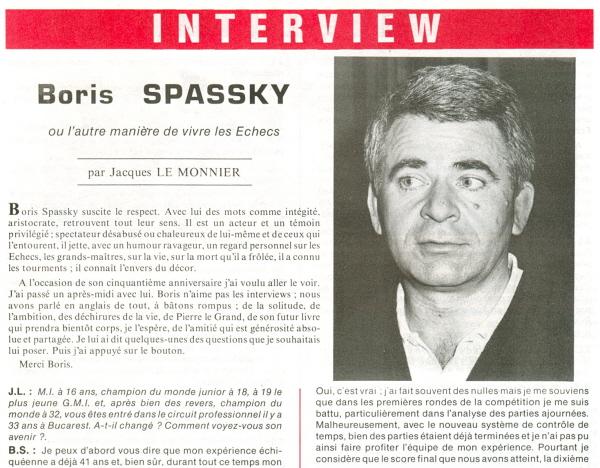
Since Spassky’s side of the story regarding the 1977-78 match against Korchnoi has received little attention, his comments in Europe Echecs are reproduced below:
‘Quant à moi, je n’ai écrit qu’un livre. A propos de mon match contre Kortchnoï en 1977-78 à Belgrade. Il fut considéré comme un match très mystérieux; Kortchnoï m’a accusé d’utiliser des rayons X, les services du KGB etc. Mais à cette époque je me battais pour les droits des joueurs professionnels; personne n’a le droit de gêner un joueur quand c’est à son tour de jouer, quand sa pendule marche. C’était mon principal souci.
... Kortchnoï a presque retourné le problème. Il a spéculé; il m’a accusé d’être le perturbateur pendant la partie.
Personnellement je le respecte beaucoup comme lutteur et comme joueur; il a beaucoup travaillé, il est toujours à la recherche de la nouveauté, il étudie les Echecs très profondément. Je le connais depuis quarante ans. Mais en fin de compte ce qui arriva fut très important. On réalisa que j’avais raison; dans la suite du match on installa des boxes qui protégeaient des influences extérieures. Mais Kortchnoï changea complètement; dans ce cas j’étais l’agresseur. C’est contre cela que je protestais. Après tout peu importe puisque maintenant cela fait partie de l’histoire.
... Le tennis m’a donné un autre bonheur dans la vie. Quand j’écrivais mon livre à propos de mon match contre Kortchnoï, vous savez que j’ai réuni beaucoup de matériel, tant il y eut de bassesse pendant ce match, tant de spéculations.
... Le comportement de Kortchnoï ... Je n’ai pas pu lui parler pendant six ans. Maintenant c’est possible. J’écrivais ce livre et c’est le tennis qui m’a permis de supporter et de le terminer; j’avais pris l’engagement vis-à-vis de moi-même de décrire ce qui s’était passé, de dire la vérité. Non seulement j’avais été maltraité mais, comme on dit en anglais, diffamé. Toute ma vie, j’ai été honnête. Aussi ai-je joué au tennis contre un mur pendant une heure. J’étais trempé, je me reposai et je recommençai à écrire. C’est comme cela que j’ai pu finir mon livre. Je le devais, luttant contre ce moulin à vent. Ce genre de procès fut sans doute le plus difficile et le plus dur que j’ai supporté dans ma vie. Pour moi ce fut en quelque sorte la ruine de toutes mes illusions sur les droits de l’homme.’
Commenting in his Times column of 24 June 1978 (page 19) about Raymond Keene’s book on the 1977-78 Korchnoi v Spassky Candidates’ match, Harry Golombek wrote that the account ‘is so partial as to fail to carry any real conviction’.
(5215)
Alejandro Pablo Souto (Buenos Aires) reports that the Maróczy v Korchnoi ‘spiritualist’ game was the subject of a feature on page 23 of the November 1988 Revista Internacional de Ajedrez. It quoted a Reuters dispatch from Reykjavik which had appeared in El País of 6 October 1988 and included a report on statements allegedly made by Korchnoi to the Icelandic daily newspaper Tíminn.
On the same page of the Revista Pablo Morán made a few light comments and gave the game-score up to Black’s 27th move.
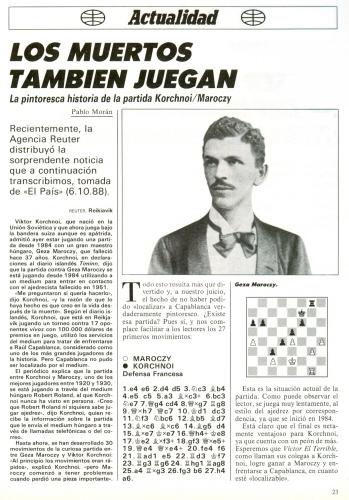
(5417)
We are grateful to Baldur Fjölnisson (Reykjavik) for sending those reports:
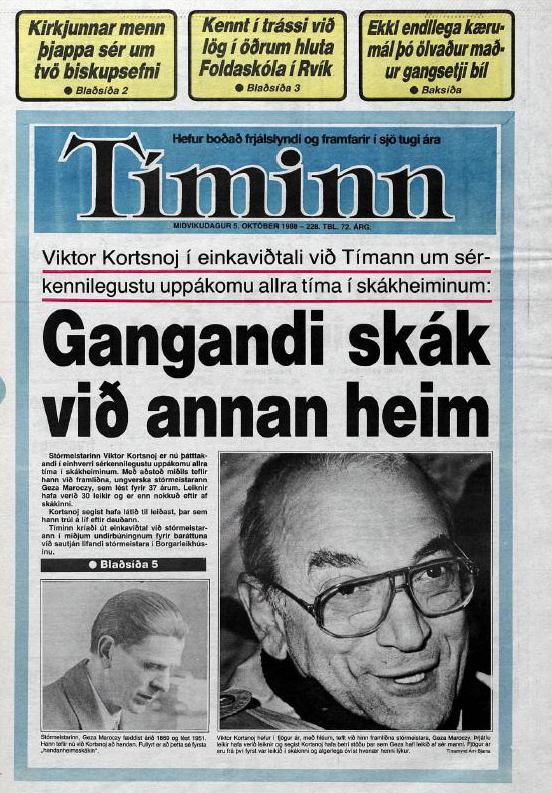
5 October 1988, page 1, page 5. 6 October 1988, page 5.
Mr Fjölnisson comments:
‘In the interview Korchnoi does not really say much about the game. Interestingly though, he states that Maróczy dropped a piece in the middle-game, which contradicts the game-score as widely published. Otherwise the story is broadly in line with accounts available on the Internet. At the time, in 1988, 30 moves had been played according to Korchnoi.’
(7262)
In Liz Garbus’s 2011 documentary film Bobby Fischer Against the World Anthony Saidy asserted:
‘Victor Korchnoi claimed to have played a match with a dead man and he even provided the moves.’
(7345)
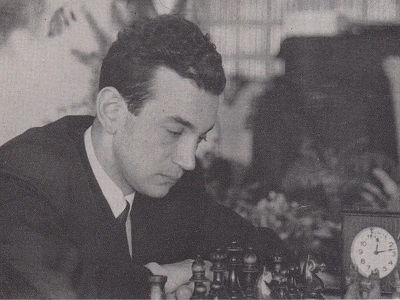
Source: Chess Review, May 1960, page 145
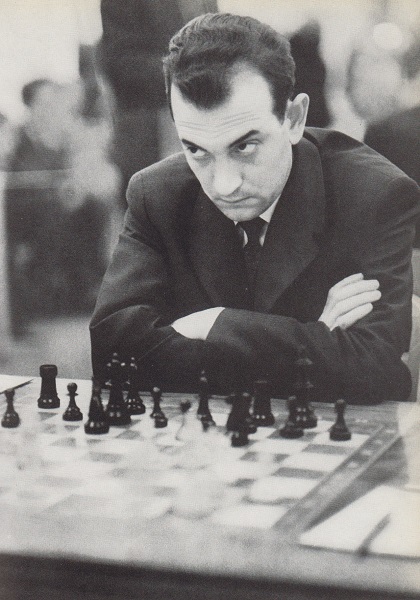
Source: XIV. Schach-Olympiade Leipzig 1960, page 155
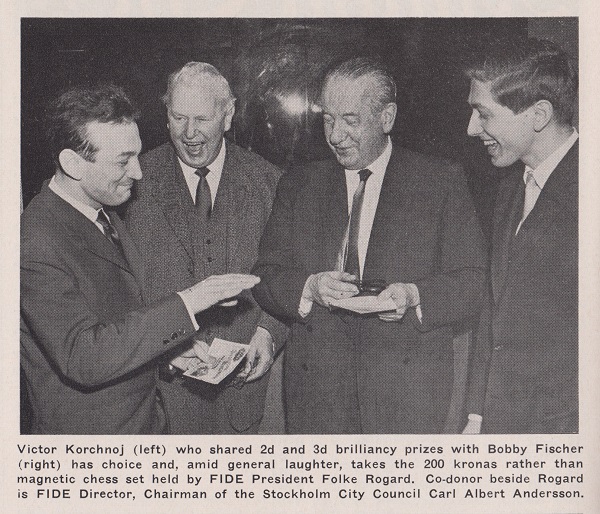
Source: Chess Review, April 1962, page 104. For Andersson read Anderson. A photograph of Anderson, Rogard and Fischer was published on page 136 of the May 1962 issue.
The next two illustrations are from the Palma de Mallorca, 1969 tournament book:
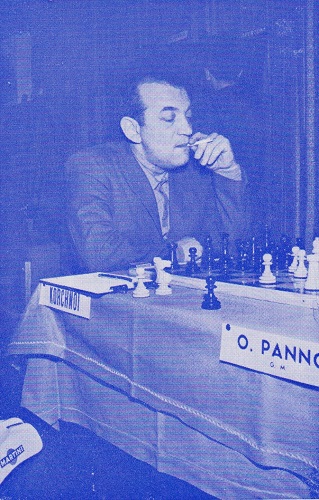
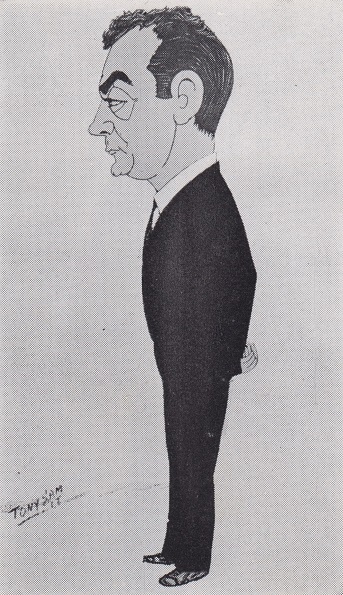
From page 117 of Chess is my Life by Victor Korchnoi (Zurich, 2005):
‘It does not seem possible, but one thing that I don’t have is a photo of myself with Bobby Fischer. Nevertheless, between 1960 and 1970 we contested eight games, in which we each scored two wins.’
In the meantime Korchnoi has doubtless noted the photograph taken at Curaçao, 1962 which is available on-line in a ChessBase article and appears on page 73 of Curaçao 1962 by Jan Timman (Alkmaar, 2005). That richly-illustrated book also has, on page 33, a group photograph in which Fischer is standing behind Korchnoi.
(5514)
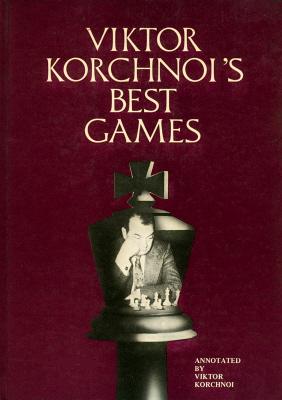
In 1978 a dispute arose over Viktor Korchnoi’s Best Games, published that year by the Philidor Press Ltd., London. In a letter dated 16 February 1978 Korchnoi informed both CHESS and the BCM that the only two books he had authorized in English were the Batsford publications Chess is my Life and The King’s Gambit. He added:
‘The Collection of Games of which I appear to be “author” is a reprint of previously annotated games published without my permission. This book is particularly damaging to me as I have in preparation a genuine collection of my best games ...’
In both magazines the Directors of the Philidor Press Ltd., David Levy and Kevin O’Connell, disputed Korchnoi’s assertions. For the various exchanges, see CHESS, March 1978 (page 165) and June 1978 (page 287) and the BCM, June 1978 (page 246) and September 1978 (page 397). No further published references to the controversy come to mind, but in the circumstances we find it rather strange to possess a copy of the book inscribed by Korchnoi:
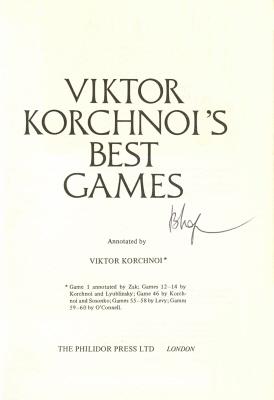
(5505)
Our remark in C.N. 5577 about the different ways in which Bogoljubow’s name is spelt has prompted Javier Asturiano Molina (Murcia, Spain) to report on another case:
‘I have found Korchnoi, Kortchnoi, Kortschnoi, Kortsnoi, Kortshnoi, Korchnoï, Kortchnoï, Korchnoy, Kortchnoy, Kortschnoy, Korchnoj, Kortchnoj, Kortschnoj, Korcznoj, Korcsnoj, Kortjnoj, Kortsjnoj, Kortšnoi and Korčnoj.’
(5591)
The illustration appeared on page 145 of CHESS, 28 January 1956:
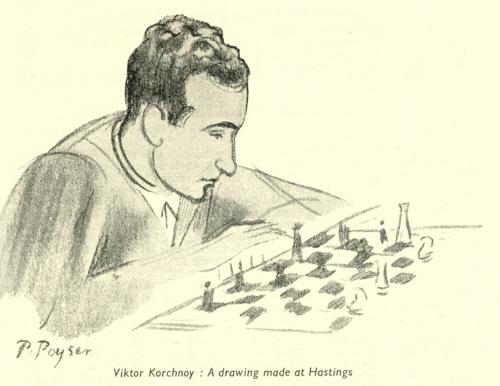
(6166)
From an article by Boris Spassky ‘The Petrosian-Korchnoi Match: Petrosian Was True to Himself’ on pages 625-627 of the November 1971 Chess Life & Review:
‘The most outstanding feature in the style of ex-world champion Tigran Petrosian is his desire to keep his opponent at his own distance. This can be seen in every game as well as in the overall plan of the match. This is purely his own individual style, his chess character.
Victor Korchnoi may be described as a searching chessplayer. To me, he seems more a destroyer of the other player’s plans and positions rather than a creator. His strength is most evident in counter-attacks. He is known for his flexible playing style and colossal energy and working capacity during a game ...
Korchnoi is also a fighter with stubbornness that anyone could envy. He is tenacious in defense and can become quite “angry” – in the sports sense of that word. When he tackles a problem that comes up over the board, I believe the Leningrad grandmaster has a tendency not to trust his intuition; rather, he relies more on hard, cold calculations. His ability to figure out various continuations far in advance helps him in the endgame.
By his style, Korchnoi is more a tournament player than a match player. Sometimes, when he gets carried away by his ideas and original plans he does not reckon with the more prosaic aspects of chess. One of his shortcomings in his “ability” to get into time-trouble.
Comparing the styles of the two players, it must be said that Petrosian is a tough opponent for Korchnoi. After all, during the course of the struggle Korchnoi has to be able to discover his opponent’s plan in order to begin “destroying” it. But Petrosian’s style is often based on waiting, maneuvering, “semi-tones”. That is why the temperamental Korchnoi often had to shoot at blind targets.’
(7005)
Further to the recent celebrations of Victor Korchnoi’s 80th birthday, Gábor Gyuricza (Budapest) asks why so many reference books give the master’s date of birth as 23 July 1931 instead of 23 March 1931.
Our correspondent observes, for example, that the July date is on page 177 of Shakhmaty Entsiklopedichesky Slovar edited by Anatoly Karpov (Moscow, 1990) and in the (impersonal) ‘Career Record 1947-1976’ on page 6 of Korchnoi’s book Chess is my Life (London, 1977). See also the third-person biographical notes in Viktor Korchnoi’s Best Games (London, 1978) and Korchnoi’s 400 Best Games by V. Korchnoi, R.G. Wade and L.S. Blackstock (London and New York, 1978).
We note that the mix-up was discussed in a report by Harry Golombek on the Korchnoi v Petrosian Candidates’ match on page 279 of the May 1980 BCM:
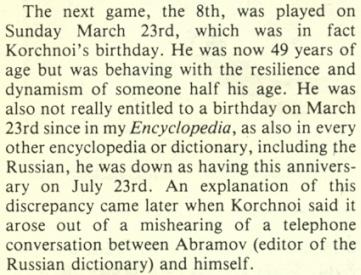
The ‘Russian dictionary’ was Shakhmatny slovar (Moscow, 1964); see page 257.
In 1981 Golombek brought out a paperback edition of his Encyclopedia. The Korchnoi entry duly corrected his date of birth from 23 July 1931 to 23 March 1931.
(7046)
Regarding the 1972 film Гроссмейстер (C.N. 7747) Javier Asturiano Molina quotes from pages 83-84 of Chess is my Life by Victor Korchnoi (London, 1977):
‘In 1972 I happened to do some acting, in a professional studio, for a film. This was a film about chess, and was called Grossmeister (Grandmaster). It told of a boy who became a grandmaster, and I played the role of his trainer. The very fact that a film about chess was made was a good thing. But the film itself turned out to be rather poor. It was not by accident that I was praised as being the best actor in the film. After all, I was playing in a professional company, among some really talented actors. It can happen that way; if the script is primitive, then even the actors have no means of expressing themselves. Nevertheless, the film was a success among chessplayers in the USSR and in Eastern Europe.’
(7753)
C.N. 6832 discussed the removal of Lubomir Kavalek’s name from the treatment of position 24 in Zahrajte si šachy s velmistry by Vlastimil Hort and Vlastimil Jansa (Prague, 1975), although he was named in the Russian translation (Moscow, 1976).
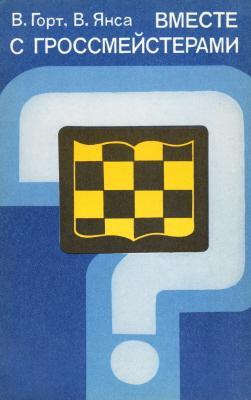
Vitaly A. Komissaruk (Kasan, Russian Federation) adds that there were deletions in the Russian edition:
‘The text for position 86 has a venue and a year, but White’s name is omitted (Korchnoi). The venue, year and name of a player were removed from positions 104 (Korchnoi), 135 (Korchnoi) and 203 (Sosonko).
Position 13 did not name either player, the venue or the year. What was the game in question?’
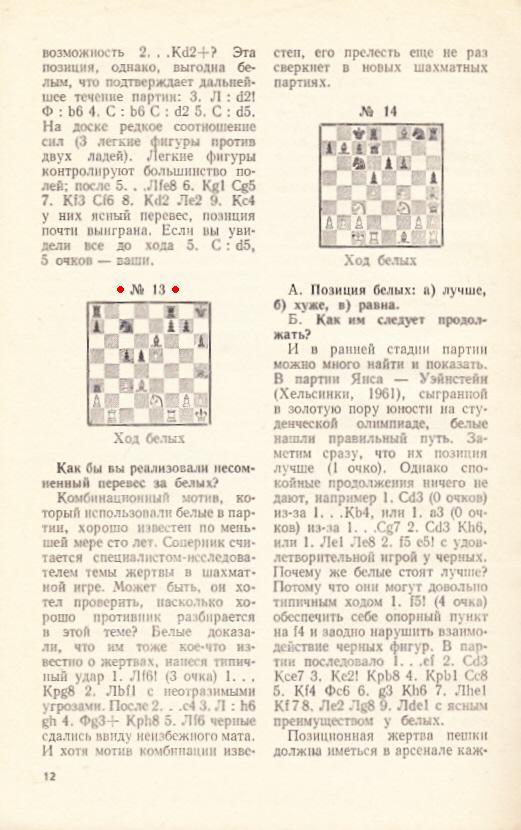
The game was Hort v Shamkovich, Moscow, 1962, as stated on page 21 of the original Czech edition of Hort and Jansa’s book.
(7939)
Olimpiu G. Urcan (Singapore) draws attention to an impressive series of articles by Lim Kok Ann on the 1978 world championship match.
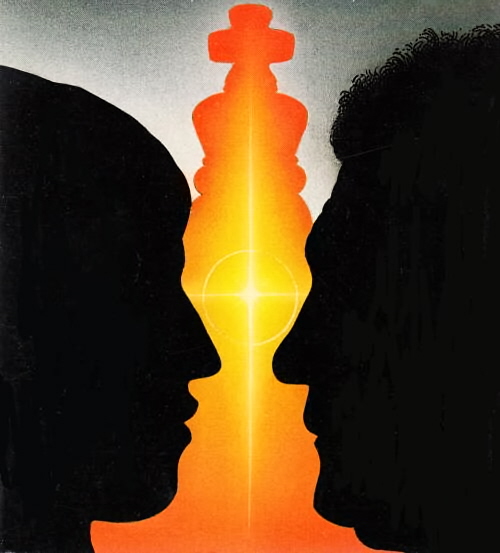
From the front cover of the match
book Het schaak der wrake
by H. Bouwmeester, J. van den Herik and L. Jongsma
(Utrecht/Antwerp, 1978)
(8177)
C.N. 8350 invited readers to submit the scores of simultaneous games in which they were involved.
From Charles Milton Ling (Vienna):
Victor Korchnoi – Charles Milton Ling
Vienna, 20 May 1970 (39 boards)
Queen’s Gambit Declined
1 d4 Nf6 2 c4 e6 3 Nc3 d5 4 Bg5 Be7 5 e3 O-O 6 Nf3 h6 7 Bxf6 Bxf6 8 Qb3 c6 9 O-O-O a5 10 cxd5 cxd5 11 Kb1 Bd7 12 e4 a4 13 Qc2 Qa5 14 exd5 exd5 15 Ne5 a3 16 Nxd7 Nxd7 17 Bb5 Nb6 18 Qf5 Qb4 19 Rd2 Bxd4 20 White resigns.
The letters section of the September 1979 CHESS, pages 337-338 had the following from Korchnoi:
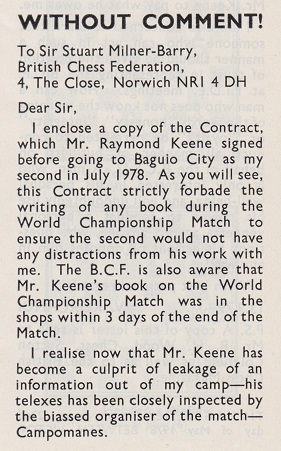
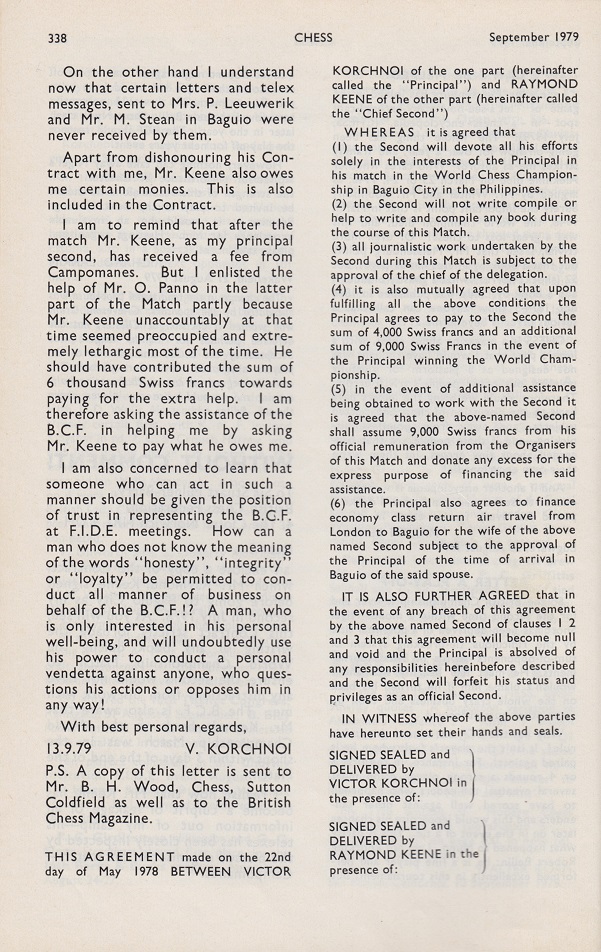
In Cuttings the ‘Korchnoi on Keene’ section includes a letter from Jean Stean, Michael Stean’s mother, which was published on pages 84-85 of the February 1980 CHESS. See too the article ‘What Jean Stean had seen’ by Justin Horton.
The back-cover inscription by Korchnoi on one of our copies of Karpov-Korchnoi 1978 by R. Keene (London, 1978):
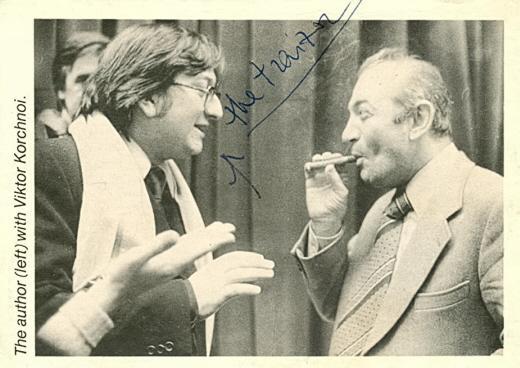
In addition to writing ‘the traitor’, Korchnoi signed the title page. The book was obtained from Korchnoi in Cape Town on 16 May 1979 by a collector of sports memorabilia.
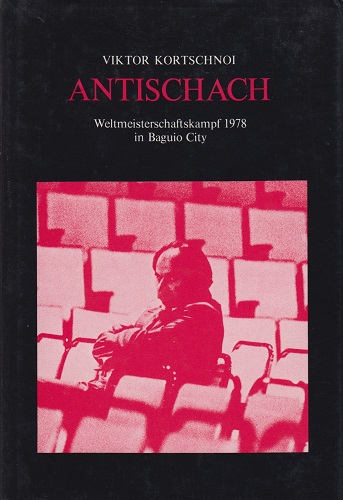
A sample page:
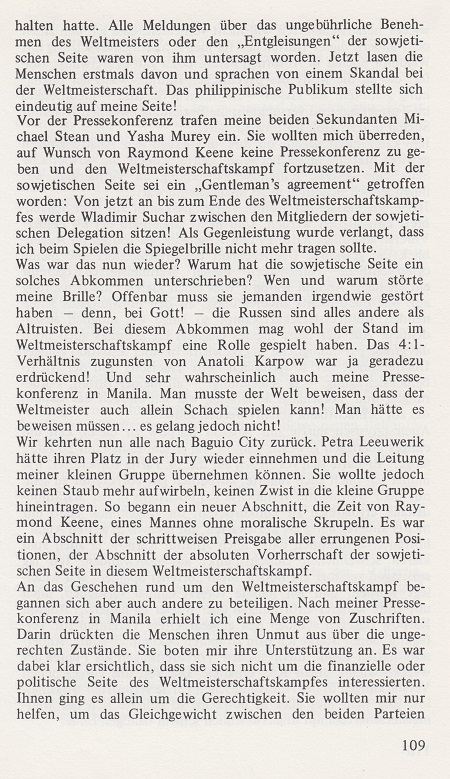
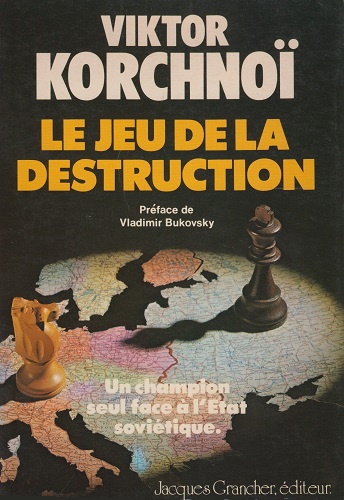
The English version was Persona Non Grata by V. Korchnoi with L. Cavallaro (Davenport, 1981). A small extract:
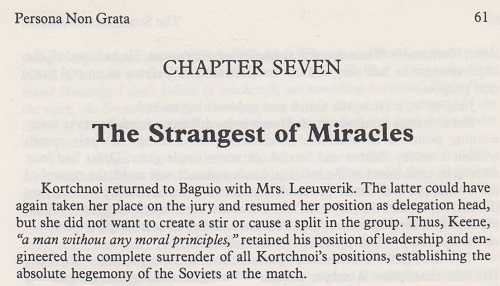
Apart from the above-mentioned editions there is a Spanish translation, Anti-ajedrez (Buenos Aires, 1980), and page 489 of the November 1981 BCM stated that ‘Korchnoi’s book has appeared in English in Iceland’.
We cannot corroborate that, but certainly an Icelandic translation of Antischach exists, published in 1981. These images come from Aðalsteinn Thorarensen (Reykjavik):
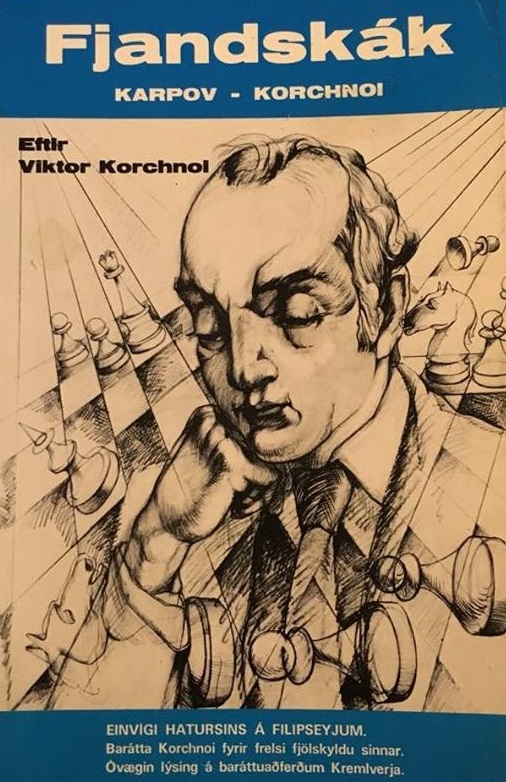
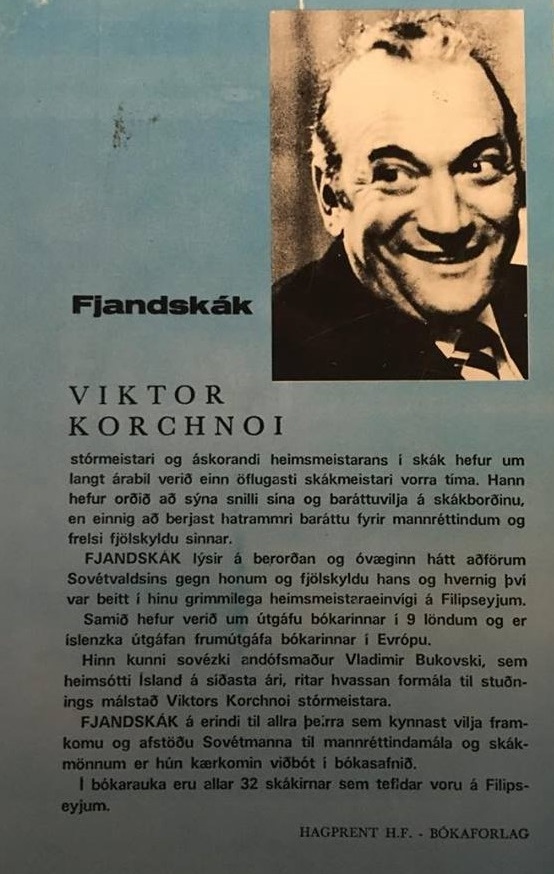
(9979)
The top of page 82:
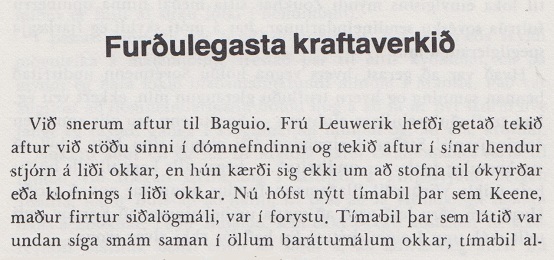
From page 107 of the above-mentioned Spanish-language edition:
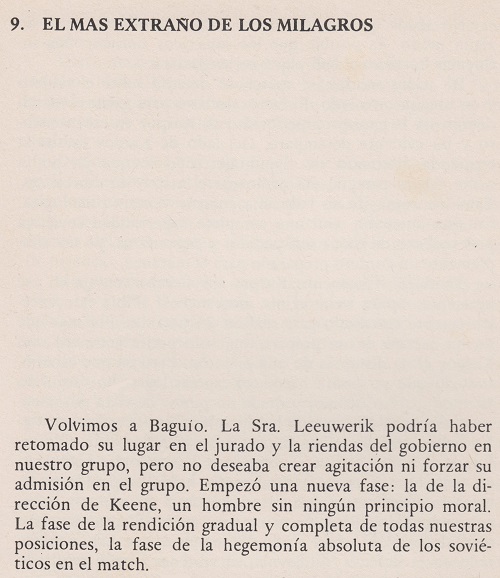
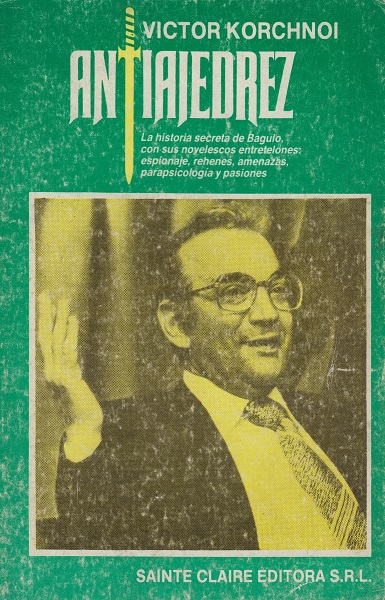
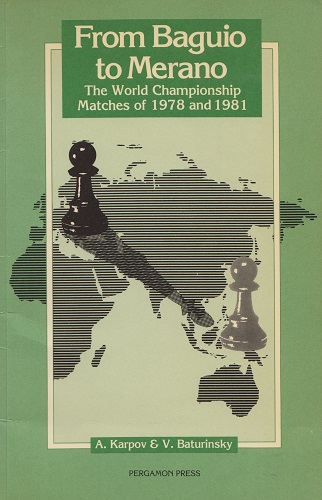
As quoted in C.N. 1322, pages 73-74 of From Baguio to Merano by A. Karpov and V. Baturinsky (Oxford, 1986) had these remarks by Karpov:
‘Since the question has arisen about people writing on chess, I will permit myself to say a few words regarding this. Many of those who came to Baguio as correspondents for their papers had altogether not the slightest connection with our game, and in fact this is one field where it is extremely difficult to get by without a minimum of special knowledge. The correspondent of the Hamburg Welt wrote in his newspaper with disarming honesty: “To tell the truth, for me chess is an unknown sphere, but, as I understand it, in Baguio we are witnessing not only the moving of wooden pieces.” These journalists were seeking something quite different at the match – as a matter of fact, the play did not concern them. It stands to reason that neither I nor anyone else can advise who should be entrusted with writing about such a significant event as a match for the world chess championship. This is a matter for each individual publication. But genuine chess connoisseurs and enthusiasts have the right to judge as they will material written in obscure (because they do not know the subject) language, lacking in chess content, and full of citations from pronouncements by Leeuwerik, in which only one tendency is apparent – antipathy to everything Soviet, to everything which is not pro-Korchnoi. Yes, during competitions I endeavour to withdraw into myself, and to concentrate on my main duty – which is to play well at chess, whereas Korchnoi constantly “feeds” the journalists, swarming like bees round a honey-pot. And those of them who altogether had no knowledge of our game described in especially vivid terms any pronouncements by the grandmaster who had defected from the Soviet Union – since this in itself was a sensation, and everything associated with it was readily published by the papers. But where does chess come into all this?
There is another, perhaps even more refined, method of forming public chess opinion. Immediately after the match, in fearful haste dictated by purely opportunist considerations (the market demands it!) a whole series of books devoted to the match were written. The quality of the overwhelming majority of them leaves a great deal to [be] desired. But in the end, grandmaster Keene, for example, might retort that, being on the staff of the Challenger, he could see for himself what was happening on the board, since he participated in the work of one of the two chess laboratories. Bent Larsen, although he was not present at the match, would reply that his chess strength enables him to analyse chess games even at a distance. But then I made the acquaintance of an analysis of the match games in a book by William Hartston, and it immediately became clear why this player, who for a long time promised to become the first English grandmaster, continues to remain an ordinary master. The superficiality of his subjective comments is beneath all criticism.
What forced me to speak about all this was by no means a desire to express my opinion, but solely my concern for the future of chess, and for the interests of chess enthusiasts, who can improve their play only from objective analytical material. My chess strength and, I hope, my popularity, nevertheless do not yet depend completely on the description of this or that journalist, or on the analysis of low-class players.’
(9980)
C.N. 10001 reproduced the original Russian text of Karpov’s observations, from pages 155-156 of his book В далеком Багио (Moscow, 1981).
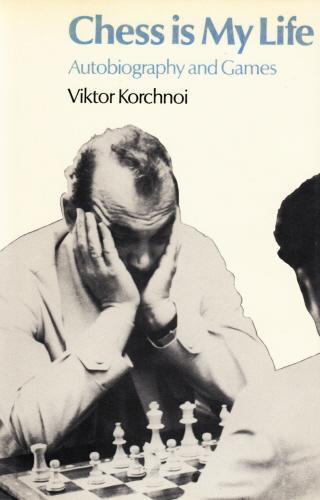
In a review of Chess is my Life by Victor Korchnoi (London, 1977) on page 16 of The Times, 2 December 1977 Bernard Levin referred to Korchnoi’s departure from the Soviet Union in 1976 and added:
‘A new Soviet book on the 1974 Karpov-Korchnoi championship match had to have all references to Korchnoi deleted, so that he is simply referred to throughout as “the opponent”.’
To which book was Levin referring? Korchnoi’s autobiography does not seem to make such a claim.
Nor do we have any books in Russian exclusively devoted to the 1974 Karpov-Korchnoi match, although all 24 match-games were annotated in Tri matcha Anatoliya Karpova by M. Botvinnik (Moscow, 1975), which also covered Karpov’s matches against Polugayevsky and Spassky. An English translation by Kenneth P. Neat was published under the title Anatoly Karpov His road to the World Championship (Oxford, 1978).
(8279)
No corroboration has been found of Bernard Levin’s assertion that after Korchnoi’s departure from the Soviet Union in 1976 ‘a new Soviet book on the 1974 Karpov-Korchnoi championship match had to have all references to Korchnoi deleted, so that he is simply referred to throughout as “the opponent”’.
More generally, however, the Soviet press’s practice of omitting his name has been mentioned by Korchnoi himself. For instance:
‘Once the Soviet Chess Federation had failed in its attempt to exclude me from the world championship (a service for which I have President of the World Federation Dr Euwe to thank) the press couldn’t cope with having to report my candidates’ matches with Petrosian, Polugayevsky and Spassky. I was never named, and referred to only as “the challenger”, but of course people knew who I was and what the news “Polugayevsky played poorly against the challenger” meant.’
Source: an interview with Korchnoi by Richard Forster in Kingpin, Autumn 2001, pages 15-18 (translation by George Green).
Below is the relevant section of the original interview, published on page 57 of the Neue Zürcher Zeitung, 23 March 2001:
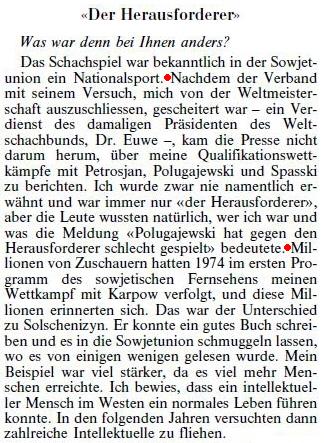
Can readers submit any particularly egregious examples from Soviet publications of the time?
(8384)
Dan Scoones (Port Coquitlam, BC, Canada) writes:
‘Victor Korchnoi’s participation in the 1977-78 Candidates’ cycle was covered in rather curious and inconsistent fashion by the leading Soviet chess publications. Unlike mainstream news outlets such as Pravda and Izvestia, the chess publications could hardly suppress his name but they did make a serious effort to suppress his results.
In the weekly newspaper 64 there was detailed coverage of all the Candidates’ matches except the ones involving Korchnoi. The bare results of his matches against Petrosian and Polugayevsky were given, but no games were published. Detailed analysis was provided of all the other games from the quarter-final and semi-final matches. For the final match, Korchnoi v Spassky, only the weekly standings and the final result were given. There was just one exception: the moves of the final game were published.
Shakhmaty Riga followed a policy similar to that of 64. There was detailed analysis of all matches except the ones involving Korchnoi, for which only the bare results were given. For the final match against Spassky, the box score and the moves of three games (4, 12 and 18) were published.
In Shakhmaty v SSSR there was no coverage of the Candidates’ cycle, including the non-Korchnoi matches, except for three or four annotated games from the “non-Korchnoi” quarter-finals. This is remarkable. A leading master qualifies to play a match against the Soviet world champion, and the whole matter is completely ignored by the leading Soviet chess publication.
Shakhmatny Bulletin published all the games of the cycle and did not refrain from identifying Korchnoi by name. In keeping with the magazine’s general editorial policy, there were no annotations and no added comments. However, in the annual index, published in the 12/1977 issue, none of Korchnoi’s games that had appeared in earlier issues was indexed.
The front and back covers of the 3/1978 issue of 64:
That is the issue which should have announced Korchnoi as Karpov’s official challenger on its front cover. Instead, the news is buried on the back page. This may be contrasted with the front cover of the 48/1974 issue, which announced Karpov as the winner of the 1974 Candidates’ cycle:
The 1978 world championship match received normal coverage in all four publications, but for the Candidates’ matches the general policy seems to have been to ignore Korchnoi as much as possible.’
(8389)
Afterword: on 21 April 2021 we noted at the top of the main C.N. page that this was an example of the many invaluable contributions made by Dan Scoones, who had just died. We also highlighted his work regarding Kirsan Ilyumzhinov and Aliens.
C.N. 13 (see page 232 of Chess Explorations) cited a quip by Petrosian during the 1974 Karpov v Korchnoi match, from page 166 of Anatoly Karpov: Chess is My Life by A. Karpov and A. Roshal (Oxford, 1980):
‘The press centre was linked to the stage by four television screens. Arranged in groups around the chessboards, grandmasters and journalists analysed the position, periodically glancing at the screens. At the start of the match (before his departure to the international tournament in Manila) perhaps the most popular figure in the press centre was Petrosian. The journalists would constantly turn to the ex-world champion: “Tigran Vartanovich, what should be played here?” “When I knew that, I was down on the stage, instead of up here”, was Petrosian’s joking reply.’
(8410)
Joose Norri (Helsinki) recalls that pages 1 and 2 of the tenth bulletin of the 1992 Olympiad in Manila had photographs of Victor Korchnoi, who had recently undergone an eye operation in Switzerland. Below is page 1:
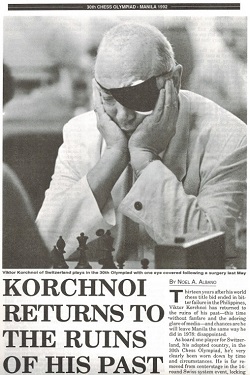
(8929)
A photograph submitted by Olimpiu G. Urcan:
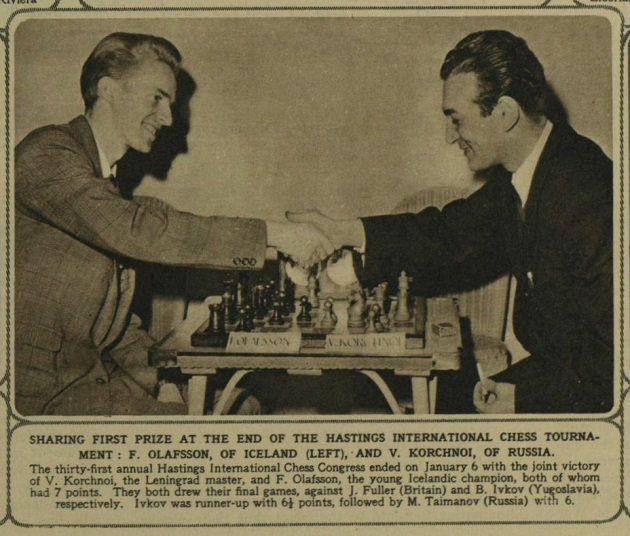
Illustrated London News, 14 January 1956, page 63
(9020)
Timothy J. Bogan (Chicago, IL, USA) writes:
‘I recently came across a letter from Victor Korchnoi in response to fan mail which I sent him during the 1978 world chess championship match. I never expected a personal response, so it was a great and pleasant surprise.’
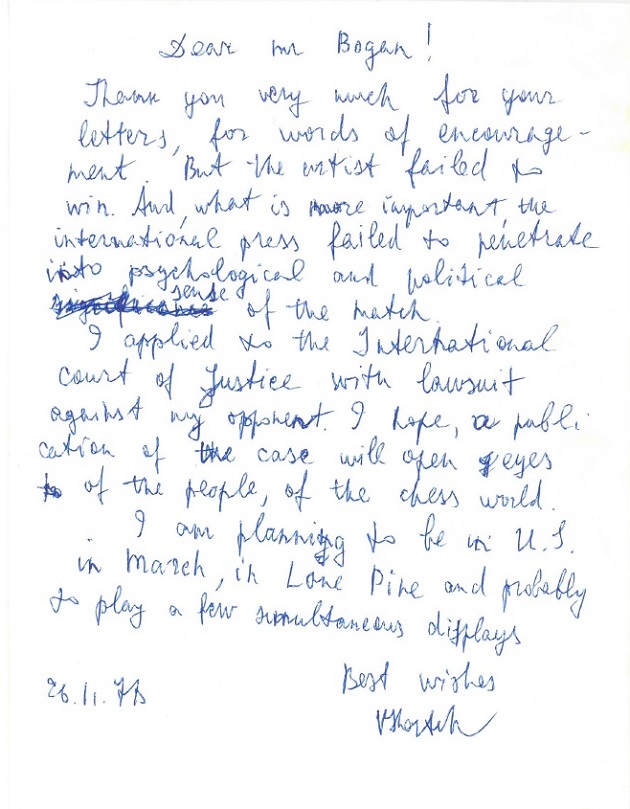
(9530)
From Thomas Niessen (Aachen, Germany):
Chess Jottings includes C.N. 795, which deals with Korchnoi’s well-known uncertainty on castling in the 1974 Candidates’ Final against Karpov. You show that after Black’s 17th move in the 21st match-game, Korchnoi wrote on page 161 of Chess is My Life (London, 1977):
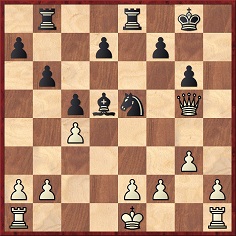
Position before 18 O-O
Concerning Korchnoi’s statement that “out of the two and a half thousand games that I had played, there had never been an instance where it had been necessary for me to castle when my rook was attacked ...”, I note the game Korchnoi v Sherbakov, Poltava, 1956, which began 1 d4 Nf6 2 c4 g6 3 Nc3 Bg7 4 g3 O-O 5 Bg2 d6 6 Nf3 c5 7 d5 e5 8 dxe6 Bxe6 9 Ng5 Bxc4 10 Bxb7 Nbd7 11 Bxa8 Qxa8
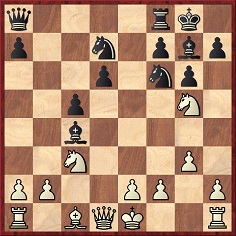
Korchnoi played 12 O-O.
I have also found two games pre-dating 1974 in which Korchnoi’s opponents castled when the rook was under attack. The first, Troianescu v Korchnoi, Bucharest, 1954, opened 1 e4 c5 2 Nc3 Nc6 3 g3 Nf6 4 Bg2 e6 5 Nge2 d5 6 exd5 exd5 7 d4 Bg4 8 h3 Be6 9 Bg5 h6 10 Bxf6 Qxf6 11 Nxd5 Bxd5 12 Bxd5 O-O-O 13 Bxc6 Qxc6.
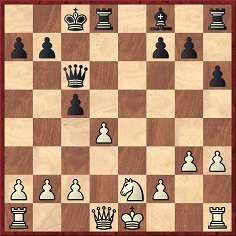
Here, 14 O-O was played by Troianescu.
The second game is Smyslov v Korchnoi, Moscow, 1960, which began 1 e4 c5 2 Nf3 d6 3 d4 cxd4 4 Nxd4 Nf6 5 Nc3 g6 6 Be2 Bg7 7 Nb3 Nc6 8 g4 b6 9 f4 Bb7 10 Bf3 O-O 11 h4 a5 12 a4 Nb4 13 h5 d5 14 e5 Nxg4 15 Nd4 Nh6 16 hxg6 fxg6 17 Ne6 Qd7 18 Nxf8 Rxf8 19 Nb5 d4 20 Bxb7 Qxb7.
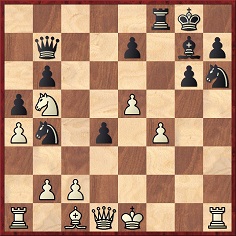
Smyslov played 21 O-O.’
The full scores are on, respectively, pages 37, 20 and 64 of Korchnoi’s Chess Games edited by David Levy and Kevin O’Connell (Oxford, 1979).
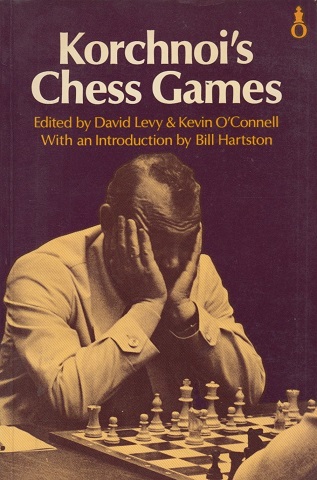
The Introduction by Hartston includes these observations (page vii):
‘Among the great players of the world Viktor Korchnoi is unique. When he sits down to a game he brings to bear a combination of concentration, determination and energy which no other grandmaster can match. To Korchnoi chess is above all a fight. While he is playing, all that matters is the result of the game. Friendships are forgotten, problems are shelved; the struggle on the board takes absolute precedence.
This tremendous will to win makes Korchnoi’s games always interesting. Never satisfied with routine play, he seeks strategic complexity, searching for the very best move from the earliest stages of the game. Often this leads him into great time-pressure, but there Korchnoi is supreme. ...
Away from chess Korchnoi is far from being the killer he is at the board. I have always found him one of the most sociable, good-humoured and generous of grandmasters, but never expect this character to show itself during a game. ...
Having passed the age of 45, when most grandmasters are well past their prime and settling down to a less strenuous tournament life, Korchnoi plays with greater vigour than ever. To have maintained his perfectionist approach and energy-demanding style is a great achievement on its own, but to have done so with ever-improving results is almost incredible. But why ponder on the source of Korchnoi’s power when we can enjoy its fruits in his games? Study them well; he put a great deal of work into them.’
(9550)
On the other side of the title page of Le joueur d’échecs by Thomas Humeau (Paris, 2015) there is only this:

The customary English version of the remark attributed to Korchnoi is ‘No chess grandmaster is normal; they only differ in the extent of their madness’. That wording can be found, for instance, on page 13 of Essential Chess Quotations by John C. Knudsen (Osthofen, 1998), a booklet with no sources. How far back can the observation be traced, in any language?
(9731)
Korchnoi’s interest in, and respect for, the great masters of the past was shown, inter alia, by his Foreword to Amos Burn A Chess Biography by Richard Forster (Jefferson, 2004).
A selection of inscribed items from our collection begins with a photograph signed by Korchnoi on the reverse side:
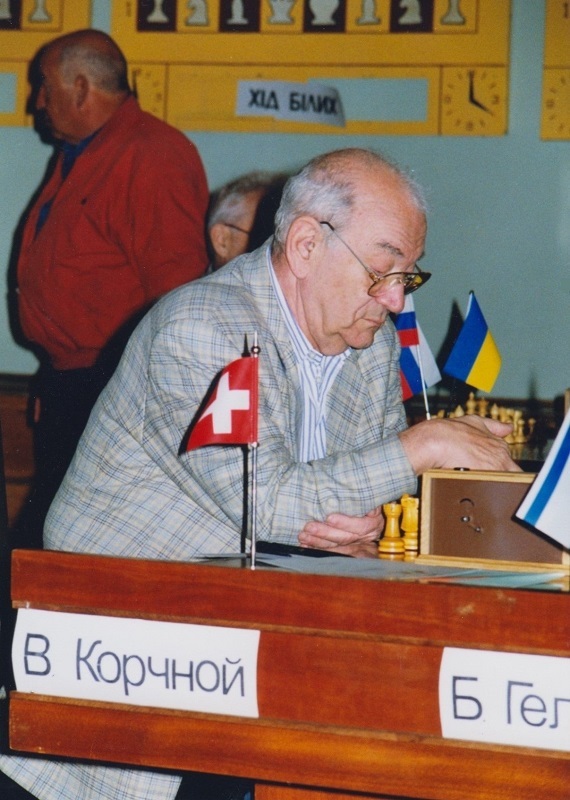
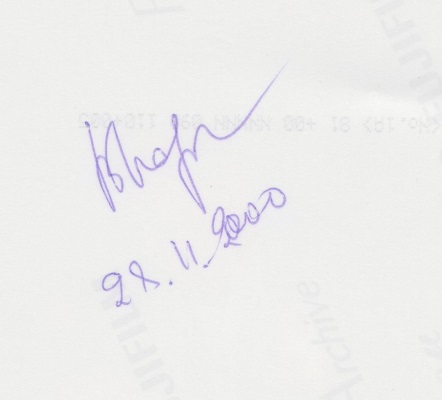
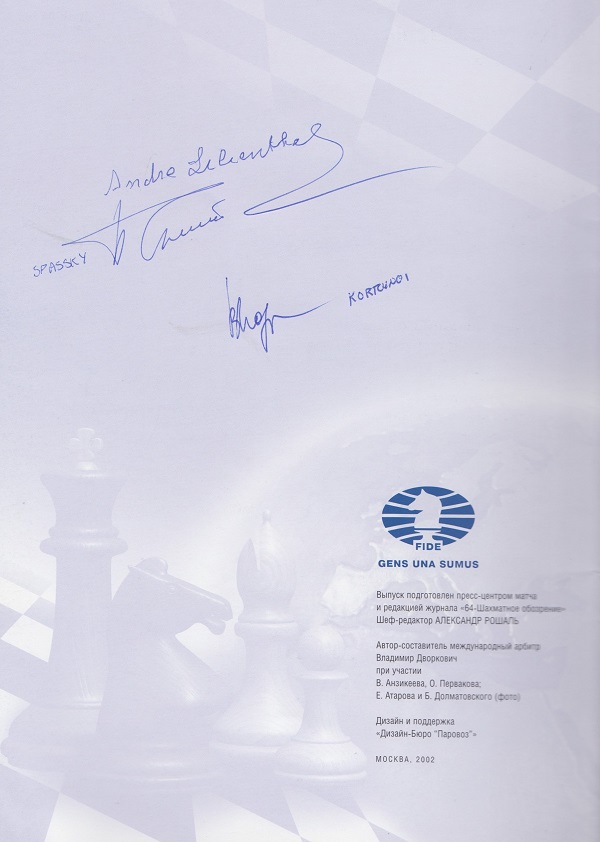
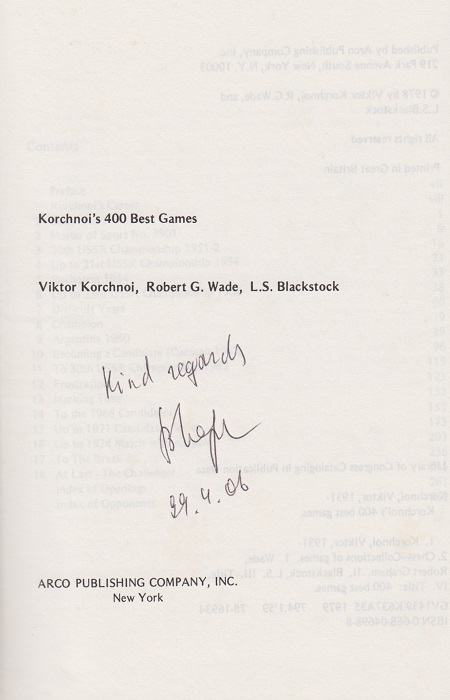
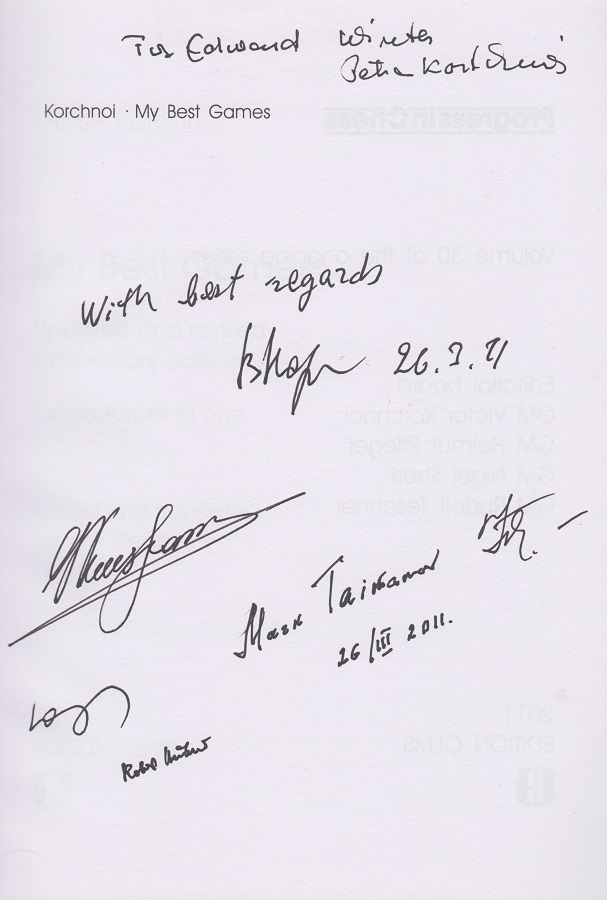
From Bruce Monson (Colorado Springs, CO, USA):
‘Even though Kasparov did not show up for the start of game one in Pasadena in 1983, Korchnoi was there and actually made a move, 1 d4. Kasparov was forfeited, of course, but ultimately this did not count.
I have not seen any photographs of Korchnoi sitting at the board across from Kasparov’s empty chair. Do you know of any?’
The Candidates’ Semi-Final match between Kasparov and Korchnoi was due to begin in Pasadena on 6 August 1983. Below is a report on page A2 of the following day’s edition of the San Bernardino County Sun:
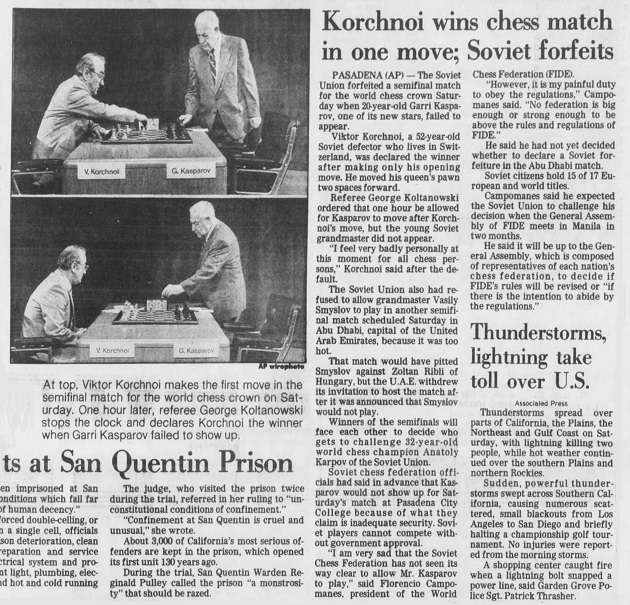
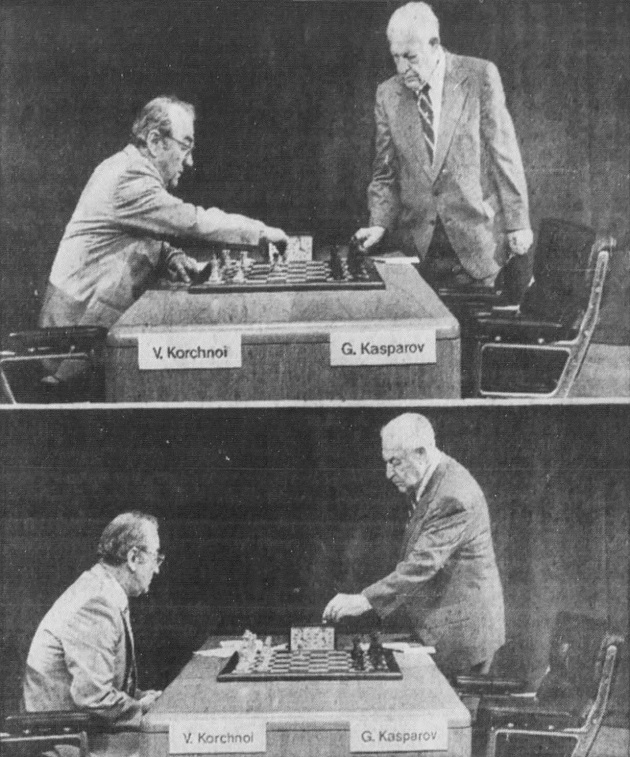
(10004)
A list of books about (not by) Korchnoi:
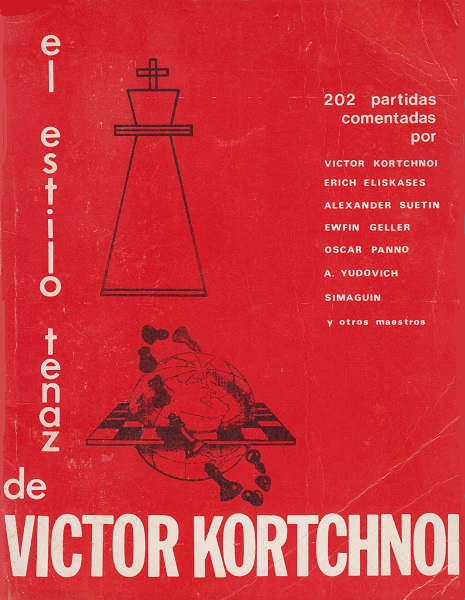
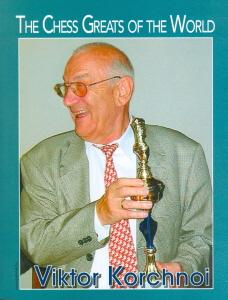
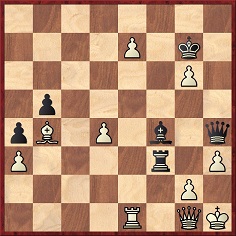
41 Qh2 Resigns
The celebrated move 41 Qh2 was played by Spassky against Korchnoi in the 22nd USSR championship in Moscow, 1955. The full game, with notes by M. Yudovich, was published on page 5 of XXII шахматный чемпионат СССР, 31 March 1955:
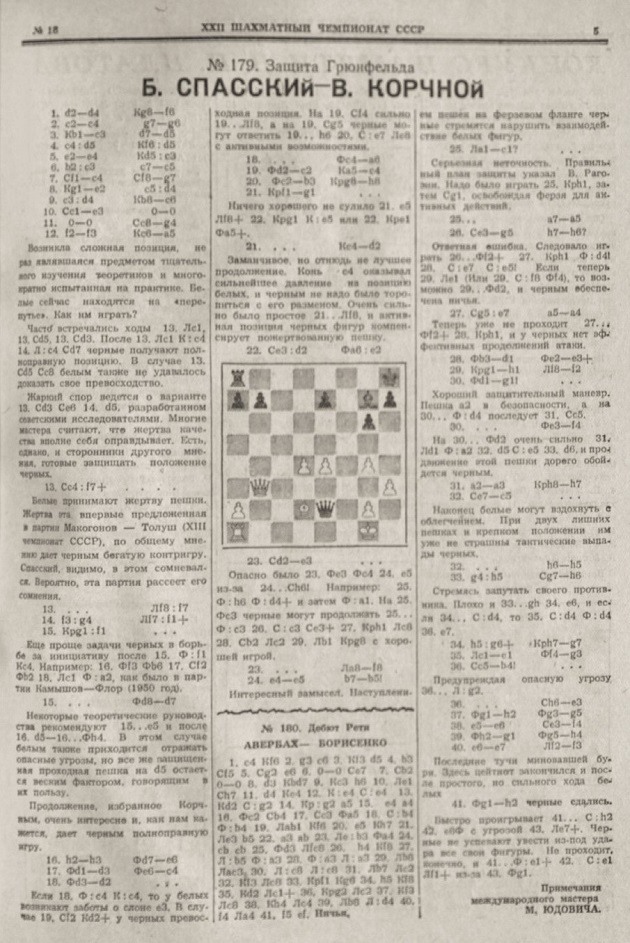
The above scan has been provided by the Cleveland Public Library.
1 d4 Nf6 2 c4 g6 3 Nc3 d5 4 cxd5 Nxd5 5 e4 Nxc3 6 bxc3 c5 7 Bc4 Bg7 8 Ne2 cxd4 9 cxd4 Nc6 10 Be3 O-O 11 O-O Bg4 12 f3 Na5 13 Bxf7+ Rxf7 14 fxg4 Rxf1+ 15 Kxf1 Qd7 16 h3 Qe6 17 Qd3 Qc4 18 Qd2 Qa6 19 Qc2 Nc4 20 Qb3 Kh8 21 Kg1 Nd2 22 Bxd2 Qxe2 23 Be3 Rf8 24 e5 b5 25 Rc1 a5 26 Bg5 h6 27 Bxe7 a4 28 Qd1 Qe3+ 29 Kh1 Rf2 30 Qg1 Qf4 31 a3 Kh7 32 Bc5 h5 33 gxh5 Bh6 34 hxg6+ Kg7 35 Re1 Qg3 36 Bb4 Be3 37 Qh2 Qg5 38 e6 Bf4 39 Qg1 Qh4 40 e7 Rf3 41 Qh2 Resigns.
Some databases give a different move-order in the opening, and a number of publications have discrepancies over the conclusion. Ten moves were lopped off in the Wildhagen volume of Spassky’s games (the ‘big red book’ – see C.N. 8962):
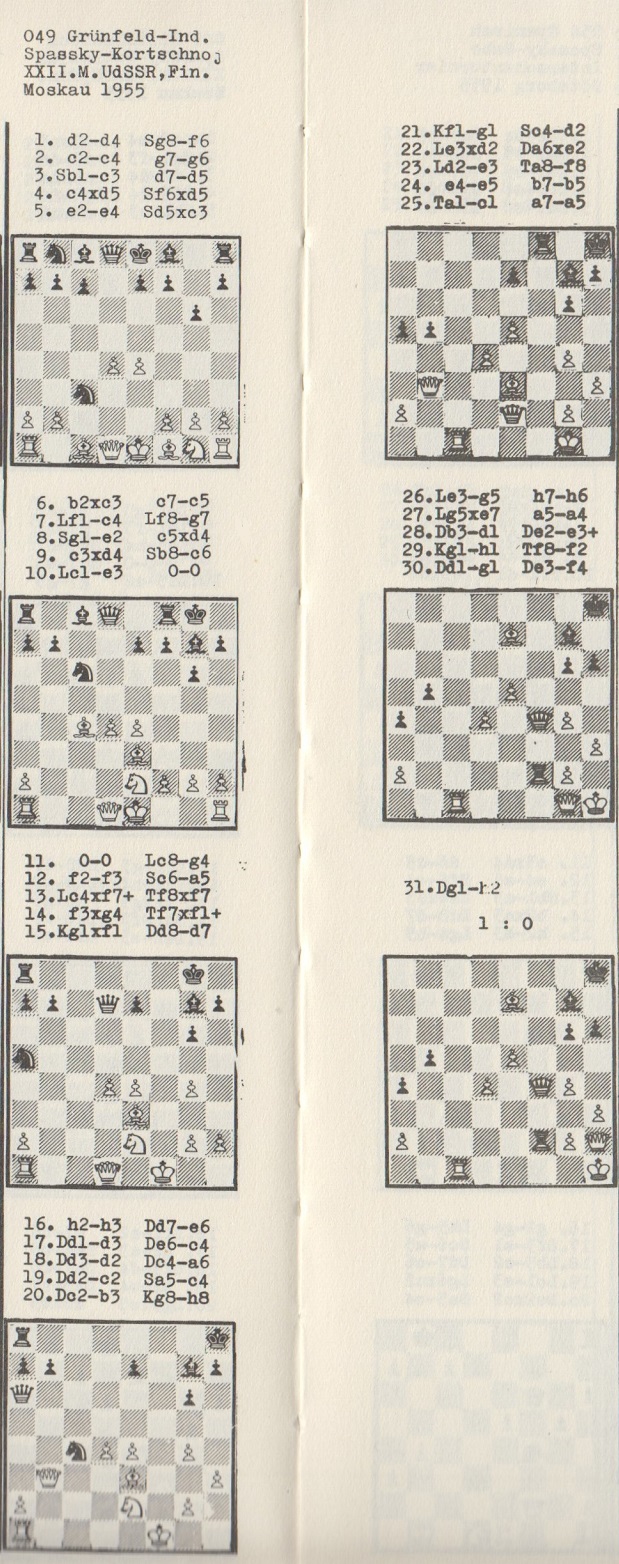
Page 76 of the Encyclopaedia of Chess Middlegames (Belgrade, 1980) had this position (black king on h7, not g7, and no white pawn on g6) before 41 Qh2:
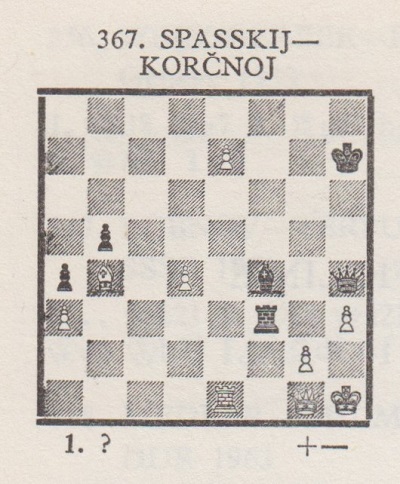
There were black pawns on h7, g6 and f5 in the ‘Winning Practice from the Masters’ article on page 23 of CHESS, 29 October 1955:
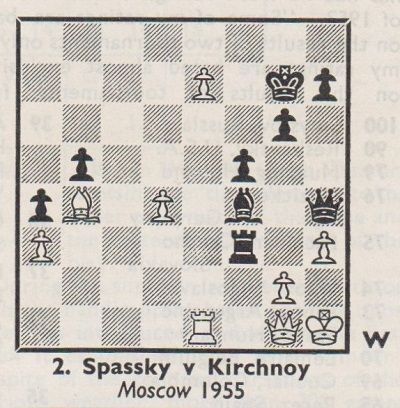
The solution on page 33:
‘1 Q-R2! This seems the only way to nullify complefely [sic] the threat of RxRPch; but now White’s passed pawn wins the game.’
Unaware that the diagram was faulty, CHESS, 12 November 1955, page 41 reported:
‘Some 30 readers point out that in No. 2 of our Winning Practice positions last issue, Korchnoy could have upset Spassky by 1...QxRch 3 [sic] Q-Kt1 RxQch 4 [sic] KxR K-B2 winning the dangerous pawn.
Sir G.A. Thomas, whose card was the first to arrive, points out that by 1 R-K2 White can draw.’
(10387)
A programme not yet mentioned in Chess and Television is Kings of the Castle, narrated by Paul Jennings, produced by Robert Toner and broadcast on BBC-2 on 22 July 1978. We have this BBC Enterprises flyer:
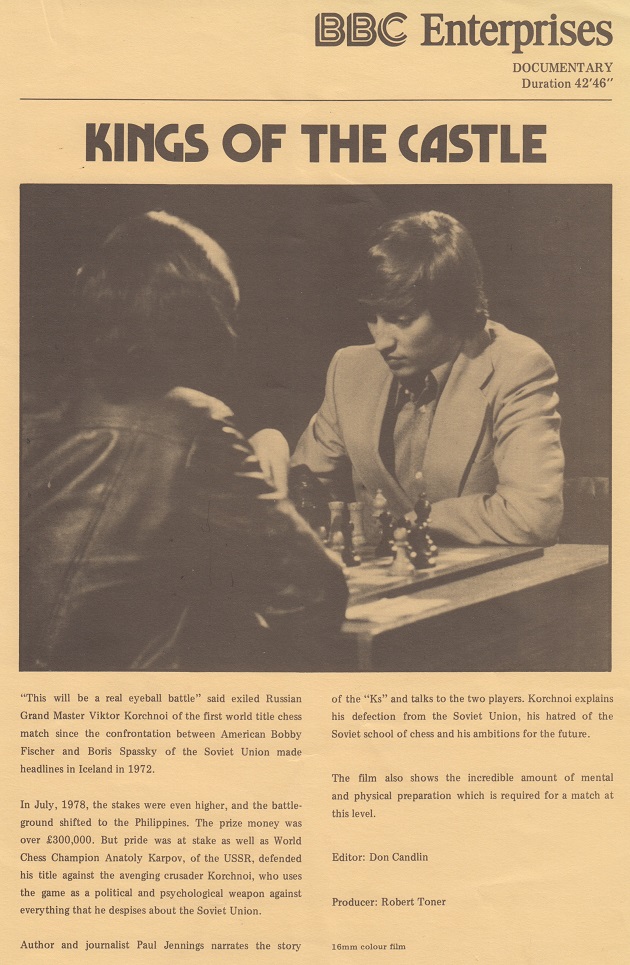
Three years later, on 3 October 1981, a documentary of the same title was transmitted by BBC-2 ahead of the world championship match in Merano.
(11825)
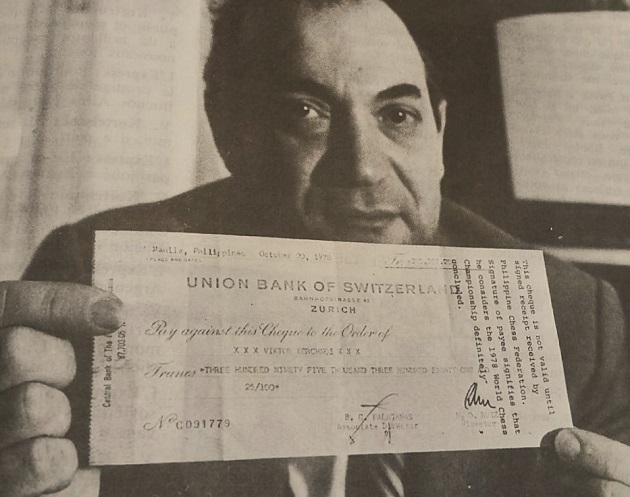
On pages 54-56 of the 23 December 1978 issue of L’Express Victor Korchnoi gave an interview to Arrabal and Alain de Pananster concerning, primarily, his recent world title match against Karpov in Baguio City. The heading was ‘Kortchnoï: Un espion m’a fait perdre’, but the alleged spy was left unnamed (Korchnoi: ‘Je sais qui a été acheté, mais je ne veux pas le dire’). The lack of rigour throughout the questions and answers is such that we show here, in passing, just one brief exchange, from page 55 (where the above photograph also appeared):
‘L’Express: Y a-t-il une relation entre les échecs et le mysticisme? Autrefois, Steinitz prétendait jouer contre Dieu ...
V. Kortchnoï: Le recours à un être suprême est compréhensible. Karpov est athée. Un domaine lui échappe.’
An English translation of relatively brief extracts from the interview was published on pages 97-98 of CHESS, January 1979, under the title ‘Korchnoi Speaks Out’. It was reproduced, with much valuable additional material, in the 2013 article by Justin Horton ‘What Jean Stean had seen’.
Raymond Keene was specifically mentioned only once in L’Express, with his surname misspelt. As regards the English-language version of the interview, below is his communication of 23 February 1979 to the FIDE General Secretary, Ineke Bakker:
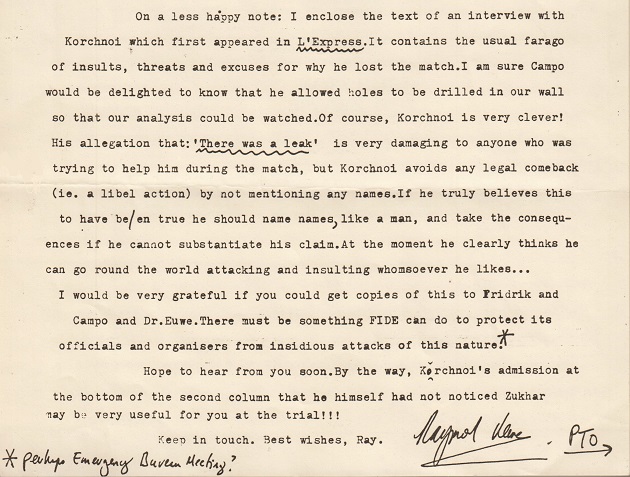
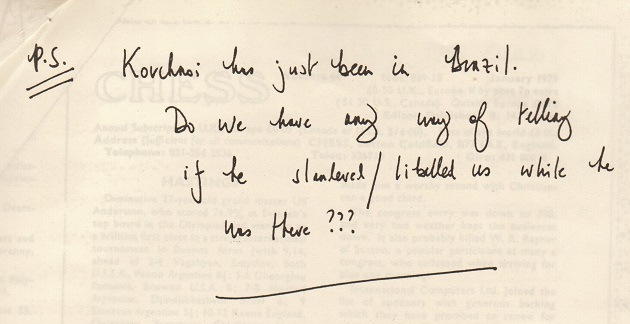
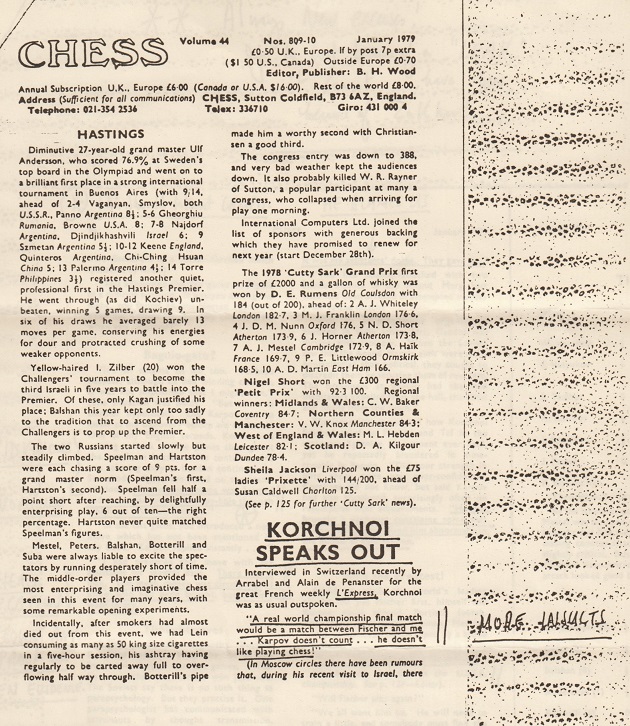
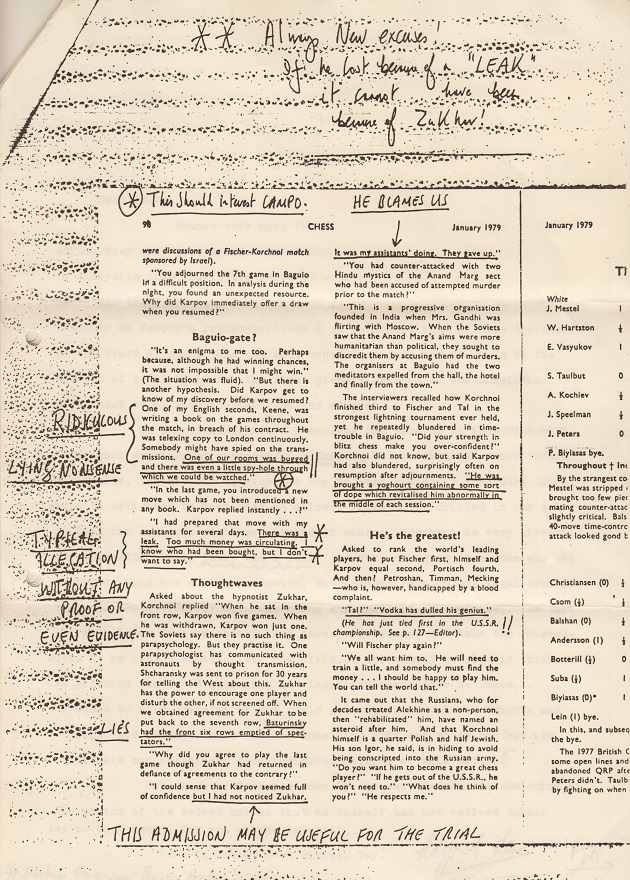
The only living person whom we would trust for a truthful first-hand account of what happened in Baguio City is Michael Stean.
(11863)
A significant article regarding Korchnoi and Keene is ‘Ex Acton ad Astra’ on pages 18-33 of the Spring 2007 issue of Kingpin.
A photograph contributed by Olimpiu G. Urcan to our feature article William Hartston:
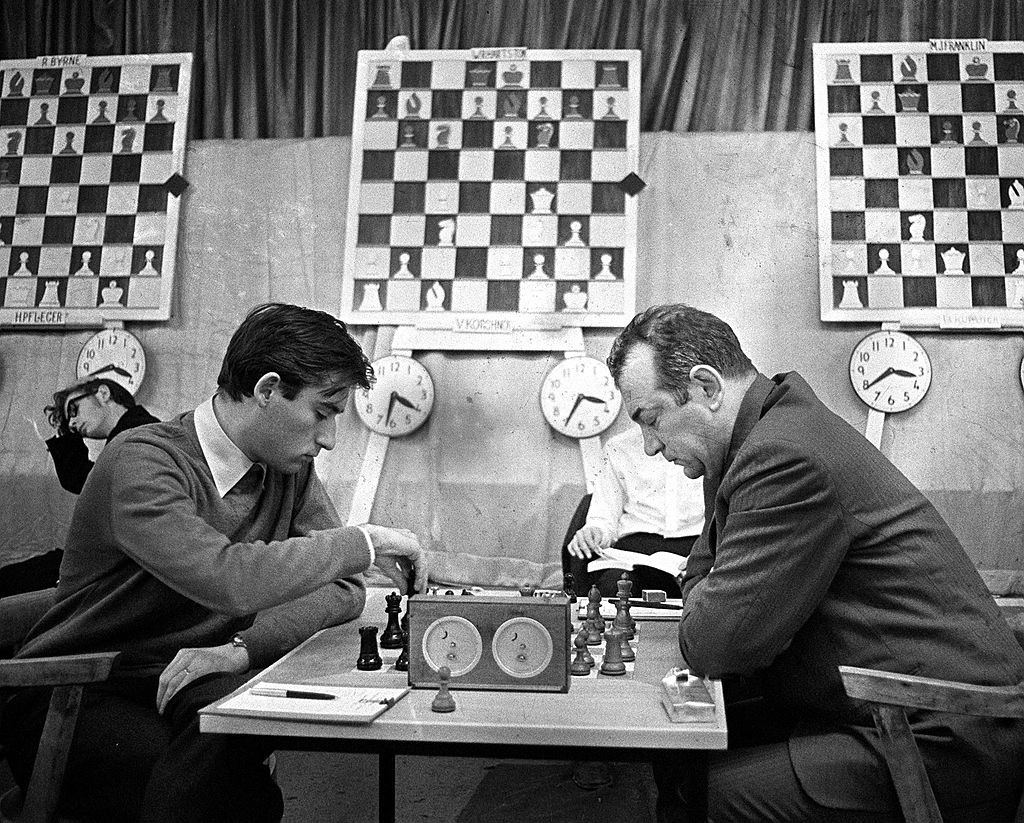
Hastings, January 1972, (Popperfoto Archive)
Olimpiu G. Urcan has obtained permission for us to show this image:
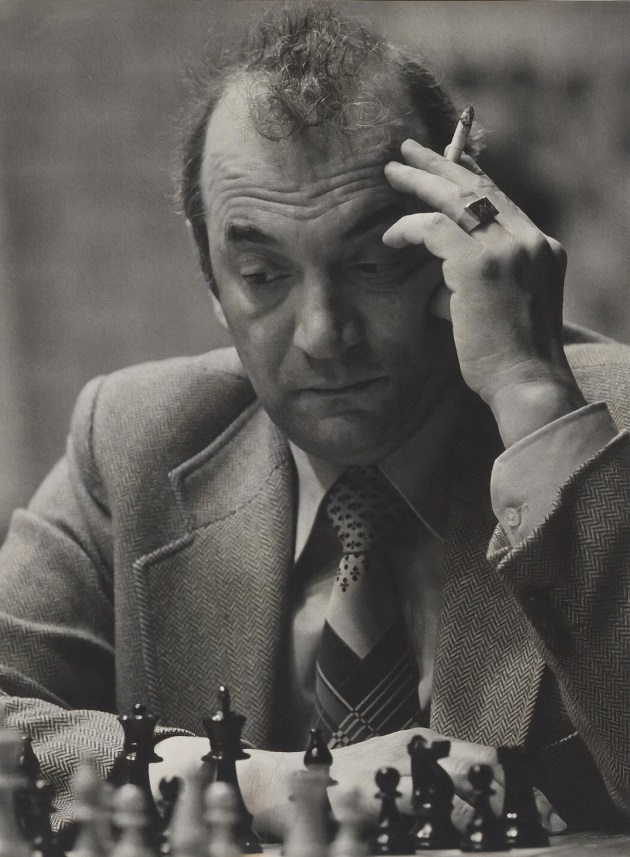
Victor Korchnoi
(A 1979 portrait from the Lev Abramovich Borodulin Collection held by the Multimedia Complex of Contemporary Arts in Moscow.)
(11906)
Olimpiu G. Urcan authorizes us to show this photograph that he has acquired:
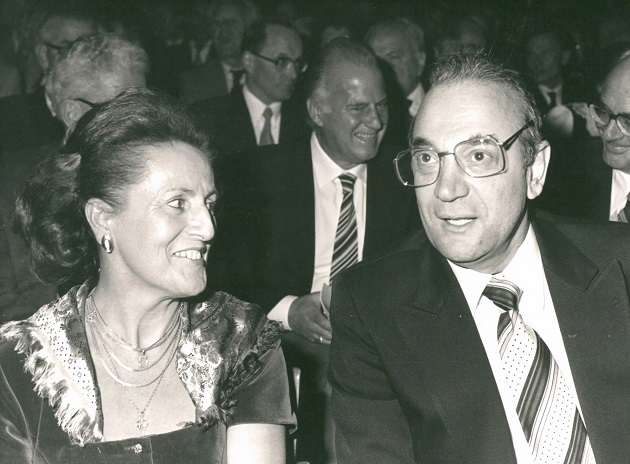
(11933)
A further contribution from Mr Urcan, to Chessplayers and Animals:
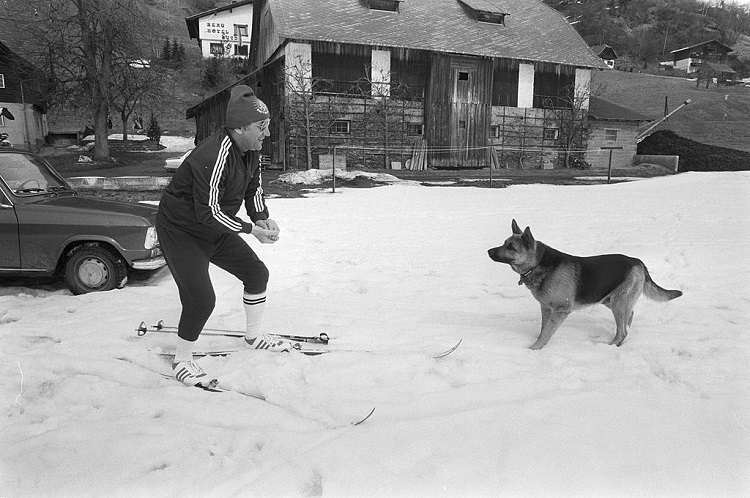
Victor Korchnoi in Velden am Wörthersee, March 1980 (Paris Match Archive)
To the Chess Notes main page.
To the Archives for other feature articles.
Copyright: Edward Winter. All rights reserved.